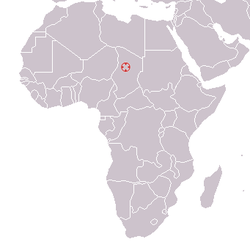Sahelantrophus tchadensis endocast - Smithsonian Museum of Natural History - 2012-05-17
An endocast is where scientists fill the inside of a skull, and make a model of the brain. The brain and its blood vessels leave imprints on the inside of the skull. Because more advanced brains have smaller veins and many more folds and lobes, an endocast is very useful in determing how intelligent a human ancestor might have been, and what portions of its brain were more developed.
Sahelanthropus tchadensis lived about 7 million years ago. Sahelanthropus tchadensis was discovered in the Djurab desert of Chad by a Frenchman and three Chadians in July 2001. Its brain is only about 320 to 380 cubic centimeters in volume, about that of a modern chimpanzee.Relevantní obrázky
Relevantní články
Sahelanthropus tchadensisSahelanthropus tchadensis je druh vyhynulých hominidů, žijící ve svrchním miocénu na území dnešního Čadu ve střední Africe. Vývojově stojí velmi blízko poslednímu společnému předku moderních šimpanzů a lidí, podle posledních studií však nepatří přímo k lidské vývojové linii. Předchází tak rodům homininů, jako jsou Orrorin, Ardipithecus a Australopithecus. .. pokračovat ve čtení







